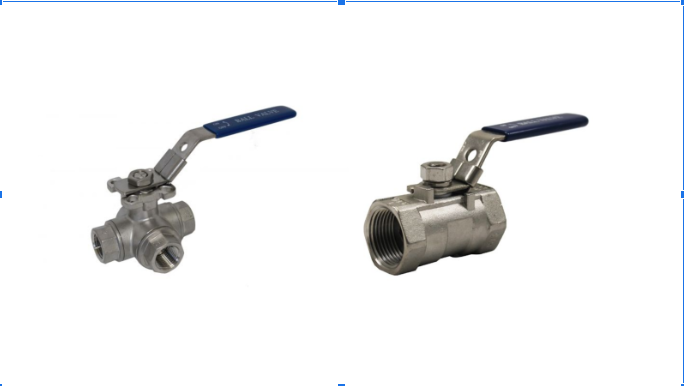Lubrication is the process of reducing friction between two surfaces. Lubrication is essential to prevent wear and tear, prevent heat generation, provide protection against corrosion and rust, prevent contamination, facilitate smooth operation, enhance load-carrying capacity, improve safety, and improve overall efficiency. The valve is one of the important components of the piping system that requires regular maintenance, which includes regular lubrication. Valves are used to regulate the flow of liquids or gasses in the piping system. Proper lubrication of valves, especially ball valve stainless steel, plays a crucial role in maintaining their functionality and extending their service life.
Why Lubricate Stainless Steel Ball Valves?
Stainless steel ball valves are renowned for their durability and resistance to corrosion, making them a popular choice in various industries. However, even with their robust construction, these valves benefit significantly from regular lubrication. Here’s why:
Reduced Friction and Wear
Regular lubrication of stainless steel ball valves helps to minimize friction between the valve’s moving parts. This reduction in friction decreases wear and tear, which can otherwise lead to premature failure of the valve.
Prevention of Heat Generation
The movement of the valve components generates heat, which can affect performance and longevity. Lubrication helps to reduce this heat by providing a smooth surface for movement, thereby preventing overheating.
Protection Against Corrosion
While stainless steel is resistant to corrosion, it is not immune to it. Lubricants often contain additives that provide an extra layer of protection against moisture and corrosive substances, ensuring that the valve continues to operate efficiently even in harsh environments.
Smooth Operation
Proper lubrication ensures that the ball valve operates smoothly and without resistance. This smooth operation is essential for maintaining accurate control over the flow of fluids or gasses, which is critical for system performance.
Enhanced Load-Carrying Capacity
Lubrication helps the valve handle higher pressures and loads by reducing friction between moving parts. This enhances the valve’s capacity to manage demanding applications without experiencing excessive wear or failure.
Types of Lubricants for Stainless Steel Ball Valves
Selecting the right lubricant for stainless steel ball valves is crucial to ensure optimal performance. The type of lubricant used should be compatible with the valve’s operating conditions and the fluids being handled. Here are some common types of lubricants:
Grease
Grease is often used for its ability to adhere to surfaces and provide long-lasting lubrication. For stainless steel ball valves, a high-quality, non-reactive grease is recommended to ensure effective lubrication and protection against rust.
Oil
Lubricating oils are used for their ability to flow and reach tight spaces. Synthetic oils, in particular, are beneficial for their resistance to high temperatures and harsh chemicals, making them suitable for various industrial applications.
Dry Lubricants
These lubricants, such as graphite or PTFE (polytetrafluoroethylene), provide lubrication without leaving a wet residue. Dry lubricants are useful in environments where contamination or exposure to chemicals is a concern.
Lubrication Procedures
Proper lubrication of stainless steel ball valves involves several steps to ensure effectiveness and safety:
Cleaning
Before applying lubricant, clean the valve to remove any dirt, debris, or old lubricant. This step is crucial to ensure that the new lubricant adheres properly and functions effectively.
Application
Apply the lubricant according to the manufacturer’s recommendations. Ensure that the lubricant is evenly distributed across the moving parts of the valve. For ball valves, focus on the stem, ball, and seat areas.
Operation
After lubrication, operate the valve a few times to distribute the lubricant evenly. This helps to ensure that the lubricant reaches all necessary components and provides adequate protection.
Inspection
Regularly inspect the valve and lubrication to ensure that it is functioning correctly. Check for any signs of wear, leaks, or performance issues that may require additional maintenance.
Maintenance Schedule
Establish a regular maintenance schedule for lubrication based on the valve’s operating conditions and manufacturer’s recommendations. Regular lubrication helps to prevent issues and maintain optimal performance.
Benefits of Regular Lubrication
Regular lubrication of stainless steel ball valves offers several benefits:
Extended Service Life
Proper lubrication reduces wear and tear, helping the valve last longer and operate more reliably.
Improved Performance
Well-lubricated valves operate smoothly, providing accurate control and reducing the risk of operational issues.
Reduced Downtime
Regular lubrication minimizes the likelihood of unexpected failures, reducing downtime and maintenance costs.
Enhanced Safety
Proper lubrication ensures that the valve functions correctly, reducing the risk of accidents and ensuring safe operation.
Conclusion
Lubrication is a critical aspect of maintaining the performance and longevity of stainless steel ball valves. By reducing friction, preventing wear, protecting against corrosion, and ensuring smooth operation, regular lubrication helps to keep these essential components functioning optimally. Selecting the right lubricant and following proper lubrication procedures are key to achieving the best results. Regular maintenance not only extends the service life of the valves but also enhances overall system efficiency and safety.























